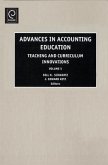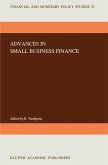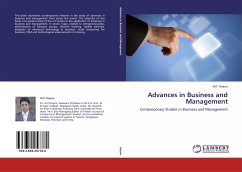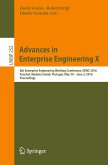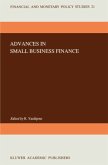Diploma Thesis from the year 1999 in the subject Business economics - Investment and Finance, grade: 1,0, Karlsruhe Institute of Technology (KIT) (Unbekannt), course: Statistics and Econometrics, language: English, abstract: Inhaltsangabe:Abstract:
We discuss the main approaches to quantify the risk of losses arising from a defaulting counterparty to a financial transaction that have been developed over the last 25 years. Every existing method faces major problems in assessing the numerous and partly non-observable factors influencing credit risk. One shortcoming common to all methods is the classical normal assumption for interest rate changes and asset returns. Therefore we suggest the introduction of stable Paretian models to yield more realistic credit spreads.
Inhaltsverzeichnis:Table of Contents:
1.Introduction
2.Basic Properties of Credit Risk Models
2.1Financial Position
2.2Default Probability
2.3The Price Of Credit Risk
3.Structural Models
3.1Structural Models With Constant Interest Rates
3.2Structural Models With Stochastic Interest Rates
4.Reduced Form Models
4.1Terminology of Reduced Form Models
4.1.1Credit Risk and Credit Events
4.1.2Rating Categories and Transition Matrices
4.2Reduced Form Modesl With Default Rates
4.3Reduced Form Models With Rating Transitions
4.3.1Modelling Rating Histories With Markov Chains
4.3.2The Introduction of Pseudo-Probabilities
4.3.3Parameter Estimation
5.Models With Implied Credit Spread
6.Hybrid Models
6.1Rating Transitions
6.2Forward Prices
6.3The Distribution of Values
6.3.1Distributions in Credit Risk and Market Risk Measurement
6.4Expected Loss
6.5Unexpected Loss
6.6Example
7.Rating Categories
7.1Alternative Credit Analysis And Rating Methodology
7.2Example. Standard&Poor s Corporate Rating
7.2.1Rating Categories
7.2.2The Rating Process
7.2.3Credit Analysis Factors
7.3Split Ratings
8.Transition Matrices
8.1Default Probabilities
8.1.1Estimating Default Probabilities
8.1.2Errors Arising From Default Estimation
8.1.3Refining Rating Categories
8.2Properties of Transition Matrices in a Markov Model
8.2.1The Markov Property
8.2.2Monotonicity of Rating Transitions
8.2.3Adjusting Transition Matrices for the Markov Property and Monotonicity
8.3Conditional Rating Migrations
9.Recovery Rates
10.The Term Structure of Credit Spreads
10.1Risk Factors With An Impact On Credit Spreads
10.2Volatility of Credit Spreads
10.2.1The Distribution of Yield Spreads
11.Challenges in Assessing Portfolio Credit Risk
11.1Joint Rating Migrations
11.2Expected and Unexpected Losses of a Portfolio
11.3Estimating Correlations
11.4Monte Carlo Simulation
12Assessing Credit Risk With Stable Models
12.1Stable Distributions
12.2Subordination
12.3Subordinated Stable Processes
12.4One Factor Term Structure Models With Subordinate Stable Process
13.New Directions for Evaluation and Forcasting Credit Risk: Future Work
Appendix
A.Derivation of the Black-Scholes Formula
B.Closed Form Solution For the Bond Price in One-Factor Term Structure Models
B.1Bond Prices For Term Structures With Constant Drift and Volatility
B.2Bond Prices For the Vasicek Model
B.3Bond Prices For the CIR Model
C.Credit Risk Links
Hinweis: Dieser Artikel kann nur an eine deutsche Lieferadresse ausgeliefert werden.
We discuss the main approaches to quantify the risk of losses arising from a defaulting counterparty to a financial transaction that have been developed over the last 25 years. Every existing method faces major problems in assessing the numerous and partly non-observable factors influencing credit risk. One shortcoming common to all methods is the classical normal assumption for interest rate changes and asset returns. Therefore we suggest the introduction of stable Paretian models to yield more realistic credit spreads.
Inhaltsverzeichnis:Table of Contents:
1.Introduction
2.Basic Properties of Credit Risk Models
2.1Financial Position
2.2Default Probability
2.3The Price Of Credit Risk
3.Structural Models
3.1Structural Models With Constant Interest Rates
3.2Structural Models With Stochastic Interest Rates
4.Reduced Form Models
4.1Terminology of Reduced Form Models
4.1.1Credit Risk and Credit Events
4.1.2Rating Categories and Transition Matrices
4.2Reduced Form Modesl With Default Rates
4.3Reduced Form Models With Rating Transitions
4.3.1Modelling Rating Histories With Markov Chains
4.3.2The Introduction of Pseudo-Probabilities
4.3.3Parameter Estimation
5.Models With Implied Credit Spread
6.Hybrid Models
6.1Rating Transitions
6.2Forward Prices
6.3The Distribution of Values
6.3.1Distributions in Credit Risk and Market Risk Measurement
6.4Expected Loss
6.5Unexpected Loss
6.6Example
7.Rating Categories
7.1Alternative Credit Analysis And Rating Methodology
7.2Example. Standard&Poor s Corporate Rating
7.2.1Rating Categories
7.2.2The Rating Process
7.2.3Credit Analysis Factors
7.3Split Ratings
8.Transition Matrices
8.1Default Probabilities
8.1.1Estimating Default Probabilities
8.1.2Errors Arising From Default Estimation
8.1.3Refining Rating Categories
8.2Properties of Transition Matrices in a Markov Model
8.2.1The Markov Property
8.2.2Monotonicity of Rating Transitions
8.2.3Adjusting Transition Matrices for the Markov Property and Monotonicity
8.3Conditional Rating Migrations
9.Recovery Rates
10.The Term Structure of Credit Spreads
10.1Risk Factors With An Impact On Credit Spreads
10.2Volatility of Credit Spreads
10.2.1The Distribution of Yield Spreads
11.Challenges in Assessing Portfolio Credit Risk
11.1Joint Rating Migrations
11.2Expected and Unexpected Losses of a Portfolio
11.3Estimating Correlations
11.4Monte Carlo Simulation
12Assessing Credit Risk With Stable Models
12.1Stable Distributions
12.2Subordination
12.3Subordinated Stable Processes
12.4One Factor Term Structure Models With Subordinate Stable Process
13.New Directions for Evaluation and Forcasting Credit Risk: Future Work
Appendix
A.Derivation of the Black-Scholes Formula
B.Closed Form Solution For the Bond Price in One-Factor Term Structure Models
B.1Bond Prices For Term Structures With Constant Drift and Volatility
B.2Bond Prices For the Vasicek Model
B.3Bond Prices For the CIR Model
C.Credit Risk Links
Hinweis: Dieser Artikel kann nur an eine deutsche Lieferadresse ausgeliefert werden.


